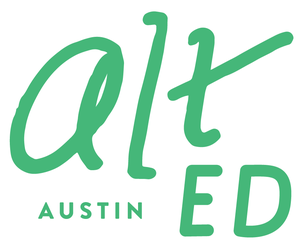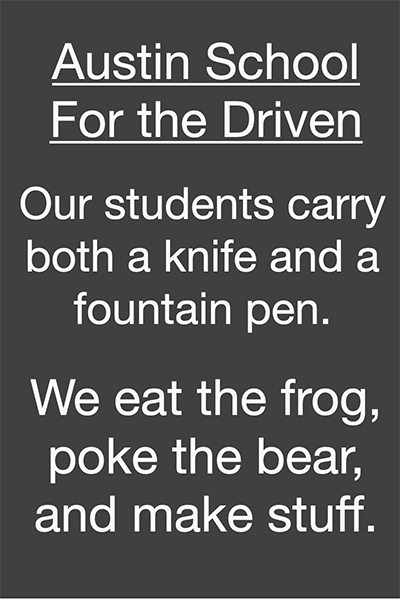Austin author's new book helps kids write loved ones' life stories
/
Jess Hagemann is an Austin-based ghostwriter and award-winning author. Her company Cider Spoon Stories helps people write fiction and nonfiction books. The newest Cider Spoon book, titled Notes from a Distinguished Life, is a DIY guide to family history for kids ages 8–22. It retails for $40 on the Cider Spoon website.
Even in heat-stricken Texas, the short, dark days of winter can make you want to hibernate. Last January, business was slow and Sunday afternoons were long when I decided to pass the time with crafting. I’d always loved collage art, and the unread magazines in our house were plentiful. With The X-Files reruns on Hulu in the background, I set to cutting out and trimming random bold words, colorful images, and isolated textures. Somewhere around the Martha Stewart Living caption “It’s time to share your stories,” I had the idea for a new book.
I’m a ghostwriter. That means I help people write books—life stories, in particular. A typical day for me is sitting down with a grandma or grandpa and my voice recorder and listening to them cry and laugh their way through recollection. It’s a time-intensive process, and while you can’t really put a price on leaving a definitive legacy behind, the service can be cost-prohibitive for some families. Enter Notes from a Distinguished Life.
Notes from a Distinguished Life is a 70-page, full-color, 100% interactive guide for kids to interview their family members. Each page of the book was originally hand-collaged, painted, and designed with an eye toward bright colors and maximum student engagement. Each page also has one or more questions, prompts, or activities to stimulate critical thinking and meaningful discussion. It’s a book meant for families who want to “ghostwrite” their loved one’s stories themselves.
No one underestimates the power of story. As children, we came to know firsthand the special ability of stories to transport the imagination. Foreign lands, exotic creatures, long-gone worlds, and far-distant futures unspool in the mind’s eye when we hear about them. They are, in some sense, made real. What people too often underestimate is the amount of time left to tell stories, and to listen to them. If I had a dime for every person who’s said, “I wish we’d hired you when Mom was still alive . . .” It doesn’t have to be that way. You and your kids can capture the stories now; you can craft a legacy that your loved ones will feel proud to leave behind!
My maternal grandfather’s name was Jackie L. Schrader. He was an enlisted sailor in the U.S. Navy, and later, chief arson investigator for the Wichita fire department. I was fortunate, while he was still alive, to help Jack write his life story. I didn’t have the same opportunity with my paternal grandfather, Donald Hagemann. Don was a lifelong farmer, permanently suntanned and wind-whipped and quiet in the way that introspective old men are. I never got to ask him if he liked being a farmer. Did he name all his cows? How did he feel about being a father to nine children (my father among them)? What was life like in the 1940s? I won't get to ask these questions, but you can.
Please do.
Jess Hagemann














